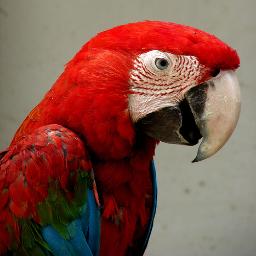打开微信,使用扫一扫进入页面后,点击右上角菜单,
点击“发送给朋友”或“分享到朋友圈”完成分享
1.下载源代码
git clone git@172.10.80.76:video/cnstream.git
2.切换分支
git checkout Style_Transfer
3.进入代码目录
cd cnstream
4.编译代码
mkdir build cd build cmake .. make -j8
5.前处理定义
因为style_transfer的前处理与我们之前的前处理稍有不同,所以也需要自己定义
class PreprocStyle_transfer : public Preproc, virtual public libstream::Reflex Ex {
public:
/**
* @brief Execute preproc on origin data
*
* @param net_inputs: neural network inputs
* @param model: model information(you can get input shape and output shape from model)
* @param package: smart pointer of struct to store origin data
*
* @return return 0 if succeed
*
* @attention net_inputs is a pointer to pre-allocated cpu memory
*/
int Execute(const std::vector& net_inputs, const std::shared_ptr& model,
const CN InfoPtr& package) override;
DECLARE_REFLEX_ _EX(PreprocStyle_transfer, Preproc);
}; // class PreprocStyle_transfer定义PreprocStyle_transfer类继承父类Preproc,并且实现父类的虚函数Execute,net_inputs中可以获取网络输入,model中可以获取模型的规模,package可以拿到原图
int PreprocStyle_transfer::Execute(const std::vector& net_inputs, const std::shared_ptr& model,
const CN InfoPtr& package) {
// check params
auto input_shapes = model->input_shapes();
if (net_inputs.size() != 1 || input_shapes[0].c() != 3) {
LOG(ERROR) << "[PreprocCpu] model input shape not supported";
return -1;
}
DLOG(INFO) <frame.width;
int height = package->frame.height;
int dst_w = input_shapes[0].w();
int dst_h = input_shapes[0].h();
uint8_t* img_data = new uint8_t[package->frame.GetBytes()];
uint8_t* t = img_data;
for (int i = 0; i frame.GetPlanes(); ++i) {
memcpy(t, package->frame.data[i]->GetCpuData(), package->frame.GetPlaneBytes(i));
t += package->frame.GetPlaneBytes(i);
}
// convert color space
cv::Mat img;
switch (package->frame.fmt) {
case cnstream::CNDataFormat::CN_PIXEL_FORMAT_BGR24:
img = cv::Mat(height, width, CV_8UC3, img_data);
break;
case cnstream::CNDataFormat::CN_PIXEL_FORMAT_RGB24:
img = cv::Mat(height, width, CV_8UC3, img_data);
cv::cvtColor(img, img, cv::COLOR_RGB2BGR);
break;
case cnstream::CNDataFormat::CN_PIXEL_FORMAT_YUV420_NV12: {
img = cv::Mat(height * 3 / 2, width, CV_8UC1, img_data);
cv::Mat bgr(height, width, CV_8UC3);
cv::cvtColor(img, bgr, cv::COLOR_YUV2BGR_NV12);
img = bgr;
} break;
case cnstream::CNDataFormat::CN_PIXEL_FORMAT_YUV420_NV21: {
img = cv::Mat(height * 3 / 2, width, CV_8UC1, img_data);
cv::Mat bgr(height, width, CV_8UC3);
cv::cvtColor(img, bgr, cv::COLOR_YUV2BGR_NV21);
img = bgr;
} break;
default:
LOG(WARNING) << "[Encoder] Unsupport pixel format.";
delete[] img_data;
return -1;
}
// resize if needed
if (height != dst_h || width != dst_w) {
cv::Mat dst(dst_h, dst_w, CV_8UC3);
cv::resize(img, dst, cv::Size(dst_w, dst_h));
img.release();
img = dst;
}
// since model input data type is float, convert image to float
cv::Mat dst(dst_h, dst_w, CV_32FC3, net_inputs[0]);
img.convertTo(dst, CV_32FC3);
float mean_value[3] = {
122.5814138,
116.5541927,
103.8942281,
};
cv::Mat mean(512, 512, CV_32FC3, cv::Scalar(mean_value[2], mean_value[1], mean_value[0]));
cv::Mat subtracted;
cv::subtract(dst, mean, subtracted);
auto input_data = net_inputs[0];
std::vector channels(3);
for (int j = 0; j < 3; j++) {
cv::Mat split_image(512, 512, CV_32FC1, input_data);
channels.push_back(split_image);
input_data += 512 * 512;
}
cv::split(dst, channels);
delete[] img_data;
return 0;
}与我们自带的CPU前处理的不同之处仅仅是多了一个split的过程
6.后处理类定义
class PostprocStyle_transfer : public Postproc, virtual public libstream::Reflex Ex {
public:
/**
* @brief Execute postproc on neural style_transfer network outputs
*
* @param net_outputs: neural network outputs
* @param model: model information(you can get input shape and output shape from model)
* @param package: smart pointer of struct to store processed result
*
* @return return 0 if succeed
*/
int Execute(const std::vector& net_outputs,
const std::shared_ptr& model,
const CN InfoPtr& package) override;
private:
DECLARE_REFLEX_ _EX(PostprocStyle_transfer, Postproc)
}; // class PostprocStyle_transfer定义自己的类PostprocStyle_transfer继承父类Postproc,并且实现父类的虚函数Execute,net_outputs中可以获取网络输出,model中可以获取模型输出的规模,package可以拿到原图
int PostprocStyle_transfer::Execute(const std::vector& net_outputs,
const std::shared_ptr& model,
const CN InfoPtr& package) {
if (net_outputs.size() != 1) {
std::cerr <output_shapes()[0];
int im_w = sp.w();
int im_h = sp.h();
auto pdata = net_outputs[0];
cv::Mat i(im_w, im_h, CV_32FC1, pdata);
std::vector mRGB(3), mBGR(3);
for (int i = 0; i < 3; i++) {
cv::Mat img(im_w, im_h, CV_32FC1, pdata+im_w*im_h*i);
mBGR[i] = img;
}
cv::Mat R,G,B;
mBGR[0].convertTo(R,CV_8UC1);
mBGR[1].convertTo(G,CV_8UC1);
mBGR[2].convertTo(B,CV_8UC1);
mRGB[0] = R;
mRGB[1] = G;
mRGB[2] = B;
cv::Mat img_merge(im_w, im_h, CV_32FC3);
cv::merge(mRGB,img_merge);
static int out = 0;
std::string out_name = std::to_string(out++) + ".jpg";
imwrite(out_name, img_merge);
return 0;
}7.运行程序
cd ../samples/detection-demo/ ./run_style.sh
运行程序用到一个json文件和一个run脚本
style_config.json:
{
"source" : {
"class_name" : "cnstream::DataSource",
"parallelism" : 0,
"next_modules" : ["detector"],
"custom_params" : {
"source_type" : "ffmpeg",
"output_type" : "mlu",
"decoder_type" : "mlu",
"device_id" : 0
}
},
"detector" : {
"class_name" : "cnstream::Inferencer",
"parallelism" : 4,
"max_input_queue_size" : 20,
"custom_params" : {
"model_path" : "../data/models/MLU100/style_transfer/japan_8mp.cambricon",
"func_name" : "subnet0",
"preproc_name" : "PreprocStyle_transfer",
"postproc_name" : "PostprocStyle_transfer",
"device_id" : 0
}
}
}model_path有两个,在同一个文件夹下,一个是japan_8mp.cambricon, 一个是modern_8mp.cambricon;这是两个不同的风格,模型下载地址:https://github.com/Cambricon/models/tree/master/MLU100/style_transfer
#!/bin/bash #*************************************************************************# # @param # drop_rate: Decode Drop rate (0~1) # src_ _rate: rate for send data # data_path: Video or image list path # model_path: offline model path # label_path: label path # postproc_name: postproc class name (PostprocSsd) # wait_time: time of one test case. When set tot 0, it will automatically exit after the eos signal arrives # rtsp = true: use rtsp # input_image = true: input image # dump_dir: dump result videos to this directory # loop = true: loop through video # device_id: mlu device id # # @notice: other flags see ./../bin/detection --help #*************************************************************************# source env.sh mkdir -p output ./../bin/detection \ --data_path ./files.list_video \ --src_ _rate 27 \ --wait_time 0 \ --rtsp=false \ --input_image=false \ --loop=false \ --config_fname "style_config.json" \ --alsologtostderr
默认输入为video, 目录下有files.list_video,也可以改为image,data_path改为files.list_image, input_image改为true即可
8.执行结果示例
原图

运行结果

热门帖子
精华帖子